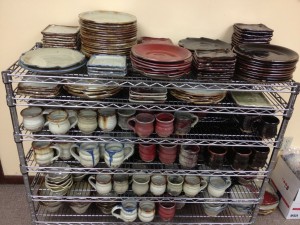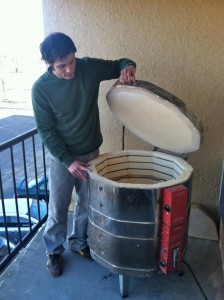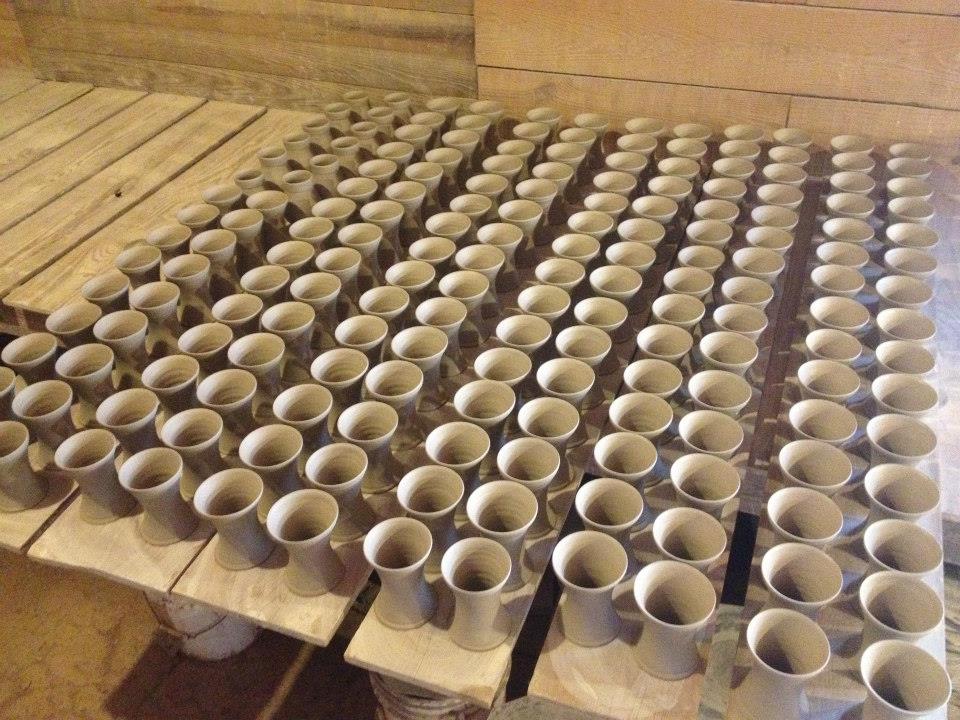“…a good design in pottery is the product of tension or ‘dialectic’ between the demands of pure utility and those of pure beauty, and only a long experience and continual struggle enables you to achieve a successful fusion of the two.”
– Michael Cardew, quoted in “Michael Cardew, a portrait” by Garth Clark, pg. 46
In recent years, I’ve been drawn to a type of pottery known as “standard ware.” Warren Mackenzie is a renowned Minnesota potter at 89 years young, still making pots in Stillwater, MN. He descries standard ware as repeated forms with the same shapes, as opposed to individual pots with varying forms, shapes, colors, etc. Warren studied under English potter Bernard Leach, who was a pioneer in the resurgence of folk pottery traditions just after World War II.
After studying the Leach Pottery, I was amazed by 2 things: 1.) Bernard Leach mostly created pots as individual art objects, and 2.) The Leach Pottery Studio, largely operated by a crew and led by his sons, found great success through high production standard ware:
Mark Hewitt is a contemporary potter living in North Carolina, who studied similar folk pottery traditions for high production. I snagged this photo from his facebook page recently. The caption was, “180 Sunday, handled today, decorate tomorrow, start loading Thursday. The making cycles seem to get shorter…”
Holy cow that’s a lotta mugs. Isaac Button, a British potter from the mid 20th Century, is another skilled dude that could bust out a ridiculous number of pots each day. He was renowned for throwing a TON of clay in a day…literally, 2,000 lbs. Check out this youtube clip for just a small taste of his skills: (video link)
What place does standardware have in contemporary ceramics? I’ve been drawn to these pottery production techniques because of the pottery I make for the Local Blend and Up Cafe. Restaurant pottery requires:
- consistent sizes (for correct food and drink portions)
- thick, rounded edges (or they’ll chip and break)
- durability (good ole’ Stoneware clay seems to do the trick)
- stackability (to fit dish racks)
- high quantity (at least 100 for use each day, a LOT more for restocking)
- consistent, glossy glazes (for easy cleaning- a coffee mug at the Blend could be washed up to 5 times each day!)
 These 2 little cafes require hundreds of finished pots so people can eat and drink their whole meal from pottery everyday. Plus, the pots sell pretty consistently and break every so often…so the ability to restock with new pottery is crucial. Standardware is a tradition that seems to fit perfectly with these 2 restaurants, as long as I can keep up on the high production as an individual artist….
These 2 little cafes require hundreds of finished pots so people can eat and drink their whole meal from pottery everyday. Plus, the pots sell pretty consistently and break every so often…so the ability to restock with new pottery is crucial. Standardware is a tradition that seems to fit perfectly with these 2 restaurants, as long as I can keep up on the high production as an individual artist….
 My new project for more consistent standardware…electric firing? We’ll see! I was gifted this kiln from an aspiring potter and friend Sue. She said, “You just figure out how we can get better, more consistent glazes and let me put them on my pots!” Even at 40+ years old, these puppies aren’t cheap- what a great gift! That’s the excitement that drives me to work towards a standard!
My new project for more consistent standardware…electric firing? We’ll see! I was gifted this kiln from an aspiring potter and friend Sue. She said, “You just figure out how we can get better, more consistent glazes and let me put them on my pots!” Even at 40+ years old, these puppies aren’t cheap- what a great gift! That’s the excitement that drives me to work towards a standard!


Nice website dude! Like the bit about rounded edges or they will chip! Having some beers and goggled pottery found your site! That’s pretty teck!
C